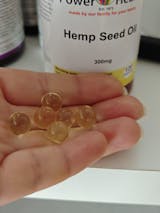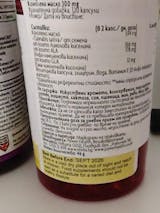Коректни! Препоръчала съм ви на приятели и те вече правят поръчките си тук.
Продуктът много ми харесва. Приемам го от 2 месеца и ефекта е голям - намаляха значително болките в кръста. Препоръчвам го.
Прекрасен продукт с завладяващ вкус в който ще се влюбите!
Непременно ще го купувам пак!
Много добре съчетани три вида колаген,хондропритектори като глюкозамин и хондроитин и не на последно място куркума.
Действието му започва да се усеща още след първите няколко приема.
Доволна съм много.
Много съм доволна от продукта. Тренирам интензивно и съответно получавам болки в коленете. След като започнах да го пия, всичко се оправи.
Всеизвестни са ползите от конопеното масло за организма като цяло.А това е голяма,изгодна разфасовка
Доволна съм от обслужването и от големия избор на продукти. Бързо и качествено.
Донолна съм от пазарувянето от Вашия вагазин.

























































